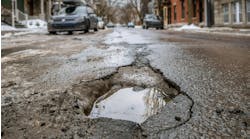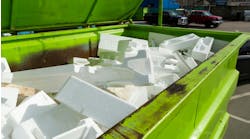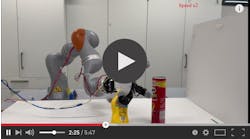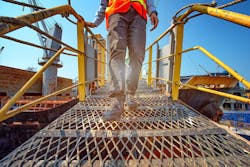SKF Bearings Help NASA's Perseverance Rover Collect Samples on Mars
Enabling the Mars Rover’s core operations in the harsh environment on Mars are Kaydon RealiSlim thin-section ball bearings, designed and manufactured by SKF at the company’s global thin-section bearing engineering center in Muskegon, Michigan, and its recently expanded manufacturing hub in Sumter, South Carolina.
These highly engineered components contribute to the survival of the rover’s main robotic arm, sample collecting turret, tool bit carousel, and sample handling assembly during a months-long trip through space, and its function as intended on the Mars surface. SKF also supplied critical bearings for the mission’s launch vehicle which carried the rover and its lander into space.
SKF bearings will play an integral role in the vital process of sample collection on Mars. When the rover is ready to begin collecting samples on the surface, the robotic arm will maneuver into place and the tool bit carousel will whirr into action, deploying tools to drill or abrade material, which will then be collected by the sample collecting turret (aka “the hand”) and transferred to the sample handling assembly for processing onboard the rover, and eventually a potential return to Earth for analysis via a future Mars mission.
“The bearings we designed and built to help the rover perform its core science activities were based on several models of Kaydon thin-section ball bearings customized by our engineers to minimize weight and save space while retaining maximum functionality and reliability for a mission where repair or replacement is simply not an option,” said Isidoro Mazzitelli, Director of Product Development and Engineering Americas. Space applications must be a small fraction of the weight of standard-bearing assemblies.
Kaydon bearing solutions are often customized from baseline models for specific customers and commonly used in applications that require a careful balance between strength, weight, size, functionality, and reliability—including robotic surgical equipment, automated precision manufacturing, detailed painting, aircraft systems, airport security scanners, and medical CT imagers.
In addition to the latest mission, SKF has a decades-long history as a supplier to global space programs, dating all the way back to NASA’s Apollo 11 mission. “Our company’s bearings, seals and other products have helped enable a wide range of spacecraft and missions for more than 40 years,” said John Schmidt, President, SKF USA, Inc. “Our parts have flown on the previous space missions, dozens of commercial and government satellites, space-borne telescopes, a wide range of rocket launch vehicles and in astronaut’s spacesuits. When conditions become critical and applications demanding, engineering knowledge is the only way to success.”









